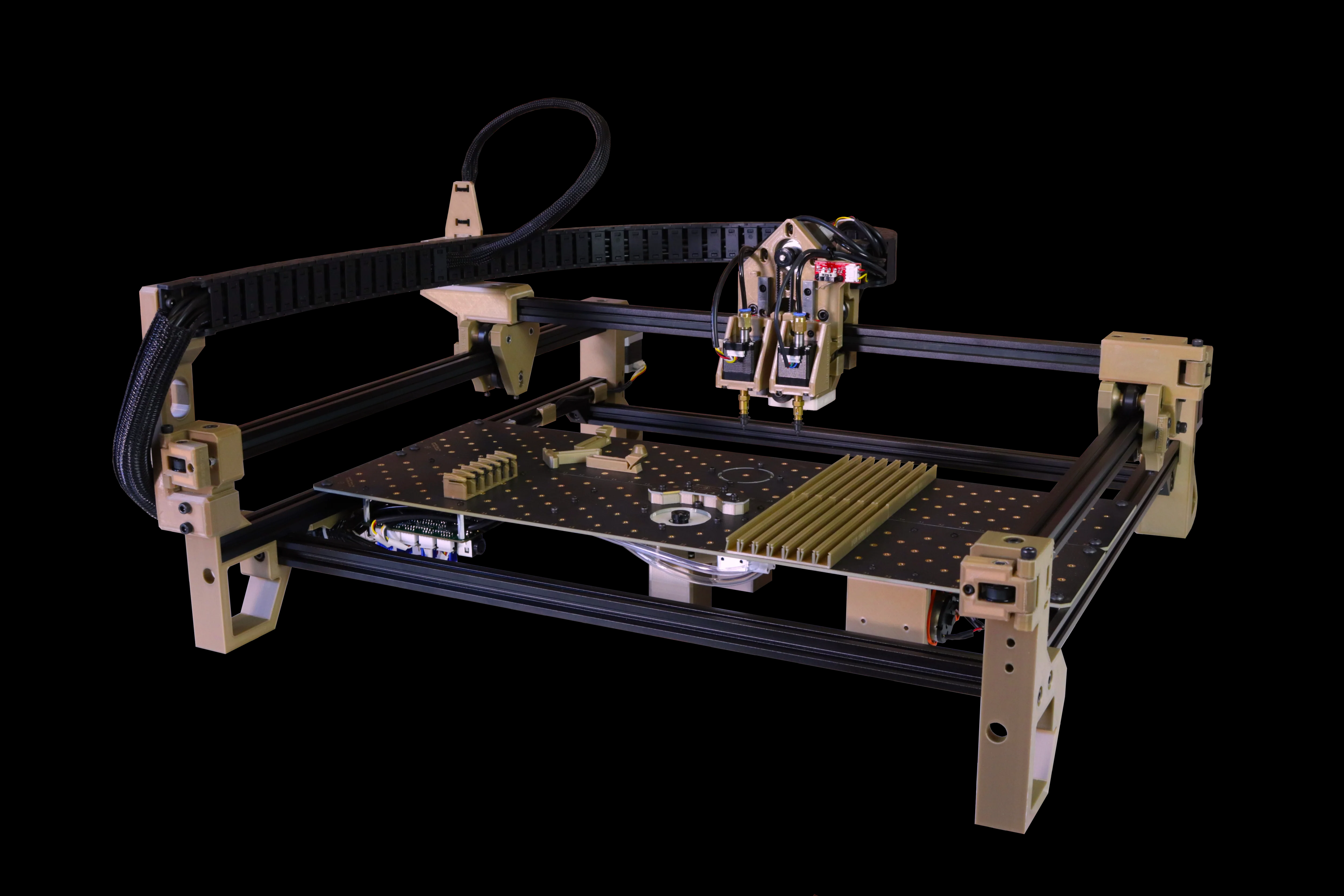I recently started to look into OpenPNP and decided to build my own Pick & Place machine! I will base the machine on LumenPNP (or IndexPNP as it also is called), but I have already started making changes of my own based on what I see done by others. The first job is to understand how a PNP works so i know what I am doing – that is actually an easy job these days due to all the folks posting hours by hours of youtube movies building one. So, here I am having ordered components for a pick and place machine that will cost me less than 1000.- USD.
My primary objective is a machine that can achieve 0603 components and build my prototypes in a hours rather than me sitting here days soldering prototypes manually. My secondary objective is to achieve 0201 components and a small prototype-production line.
First things thirst – before you start a project like this you need to be prepared for a few days of watching youtube and learning from others. Watch, learn and make up your own mind. You can’t just build and hope for the best, you need to understand the impact of the decitions you make – and the key question is – why is it hard to achieve 0201 components? If you understand why you also know the solution! Below is a picture of LumenPNP borrowed from their website found here LumenPnP (v3) – Opulo
This is a classic OpenPNP machine with many custom changes/improvements and you can buy this as a kit for ca 1800.- USD. I have no opinion if this machine is better/worse than other OpenPNP machines, but it was key to get me started. The entire project is on github and they use FreeCAD for 3D, so it is good as start as any other machine I guess. But, what is wrong with it? Why can’t it handle more than 0603/0402 components ? Bare in mind a majority of older machines or commercial machines also struggle with 0201, so what do we need to do different?
My first choise was to use NOKI Noozzle rather than Samsung CP40 – the main reason is because NOKI actually provide a nozzle capable of handling 0201 components + it was decent cost and seems to be far more used by makers. But, having a nozzle that can handle 0201 is only the first step. A far more important decition is the robustness and accuracy of the CNC machinery – which in case of LumenPNP have made a few decitions I do not like – that said I ordered parts before I realized so I will build this as is to get started.
Examing the pictures from this and some pictures of other machines you will instantly notice the lack of steel, weight and robustness – don’t get me wrong – it looks very robust, but to achieve 0201 you will depend on a machine that do not move at all. This machine will need some weight added. I might also considering adding a more robust frame or even weld a custom frame, but that is for later – my first point is the work-plate – I want this different to cover the entire 600x600mm frame. As pointed out in some videoes the frame also move a little, so I will add a 15mm tree plate supported by blocks of tree under to prevent any movement and add a thin work-plate of aluminium (or something) on top of that. This will add weight and give me a much larger plate. Obviously I also need a plate at the very bottom that can host a possible cabinet (above and under) – I can easily build a glassed cabinet later to prevent the machine from dust.
A more important decition is about accuracy of X,Y and Z axis. The current design uses belts, while it would be very easy to replace those with long metal threads and steppers that drive the threads. The advantage is that the thread act as a worm-gear giving a more accurate, robust and steady movement – I think this is one of the key changes needed to achieve 0201. But I also want to look at camera quality and designs.
Lets see what we can achieve – A PNP is at the end only a CNC machine and the accuracy and robustness of it’s movement is doomed to decide the accuracy of the entire machine IMO. I also believe that having a clear opinion about how to achieve 0201 is half job done – that said, I have never build one of these before!
As for now I have to wait 4-6 weeks on parts – I had some from before, bought parts for 350.- USD and probably need to spend another 300.- USD. So the total price will be closer to 1000.- USD for a machine with a single head and no feeders. As a hobbyist I am not so conserned about feeders because I have very few rolls of components – a strip holder will do fine. A single head means a slower machine with nozzle changes, but again – that’s fine for an entry level machine.
